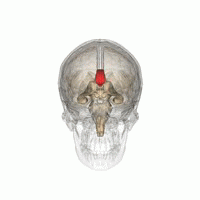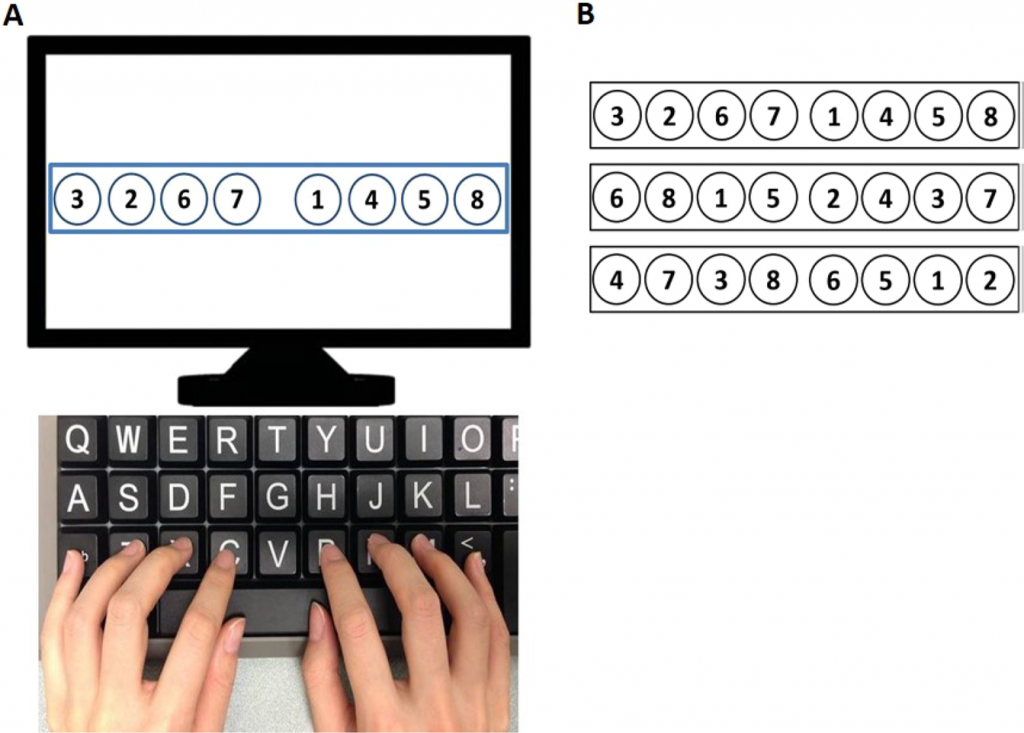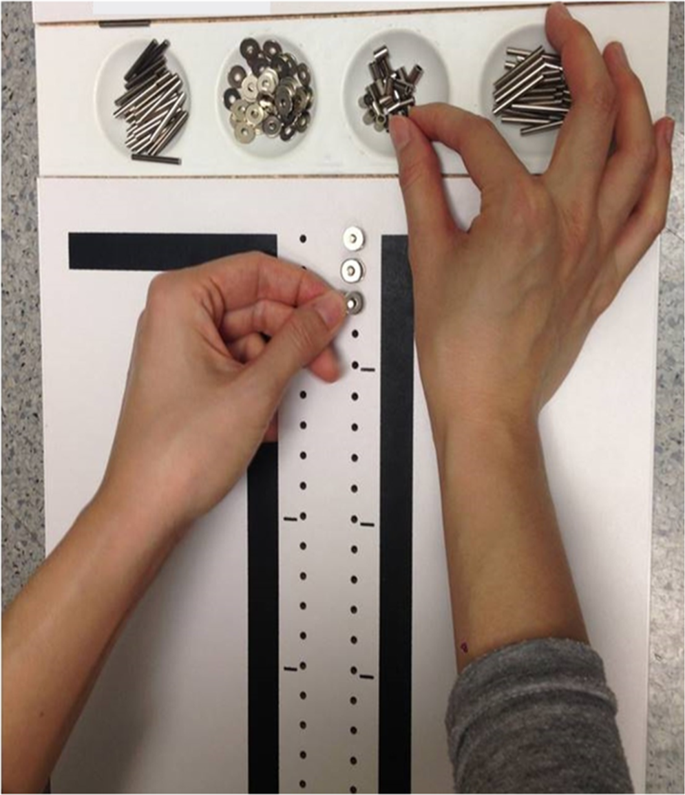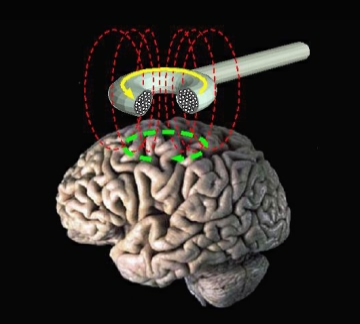Title of paper under discussion
Relationship between Interhemispheric Inhibition and Dexterous Hand Performance in Musicians and Non-musicians
Authors
Yi-Ling Kuo, Jason J. Kutch & Beth E. Fisher
Journal
Nature, Scientific Reports, volume 9, Article number: 11574 (2019)
Link to original paper (open access)
Overview
The ability of the brain’s two hemispheres to ‘talk to one another’ is down to hundreds of millions interhemispheric nerves cells connecting them, most of which are found in a bundle called the corpus callosum. These connections underpin our ability to coordinate left and right actions, coordination that is central to any instrumental musician’s technique. Such coordination depends largely on interhemispheric nerve pathways that are inhibitory (nerve cells from a region of one hemisphere that inhibit the equivalent region in the opposite hemisphere).

This paper is concerned with discovering which aspects of a musician’s technique might rely on such inhibitory interhemispheric nerve cells, cells that underlie this phenomenon of interhemispheric inhibition (referred to throughout the paper as IHI).
By looking for correlations between levels of IHI and various aspects of bimanual coordination – speed, accuracy, evenness etc – the researchers discovered that evenness and speed are especially dependent on such inhibition.
Method
36 musicians and 36 non-musicians were given two types of bimanual coordination tasks.
The first type, the finger sequence task (FST), was symmetric i.e. both hands spatially do the same thing. Each participant practised and then performed three different 8-element sequences of finger strikes on a computer keyboard; they were asked to perform them “as fast and as accurately as possible while maintaining an even key pressing interval”. Researchers monitored 1. “Reaction time” (the time it took for each participant to begin performing the task once the sequence was presented) 2. Accuracy 3. Speed and 4. Evenness of timing

The second task, the Purdue pegboard test (PPT), was asymmetric, i.e. each hand performs a different task at the same time. The participants were asked to pick up small objects (pins, washers and collars) from separate cups, one at a time using alternate hands, and assemble them in a specific order (pin, washer, collar, washer) into holes on a specially designed pegboard. The outcome monitored was the number of objects correctly assembled in a minute.

Once the participants had completed both sets of tasks, they were ready to have their “interhemispheric inhibition” measured. The method for these measurements depended on two principles: 1) the right hemisphere’s motor cortex is responsible for movements on the left side of the body and the left hemisphere for the right side of the body. 2) Interhemispheric inhibition occurs when a region of one hemisphere (for instance the region of right hemisphere motor cortex controlling left thumb adduction) inhibits its twin region in the other hemisphere (in this case the region of left hemisphere motor cortex controlling right thumb adduction).
Taking these two principles together we can see that stimulating the ‘thumb adductor’ motor cortex in the left hemisphere will 1) adduct the right hand thumb and 2) inhibit the ‘thumb adductor’ motor cortex in the right hemisphere, so ‘weakening’ the ability of the left hand thumb to be adducted. The amount of ‘weakening’ directly correlates with the amount of interhemispheric inhibition, so can be seen as a measure of it.
The motor cortex of participants in this experiment was stimulated by ‘transcranial magnetic stimulation‘ (TMS), a non-invasive technique whereby electric currents (the stimulus) are induced in the brain by a magnetic coil placed over very specific regions of the scalp (and hence the cortex).

The measure of resultant thumb ‘weakening’ – called the ‘silent period’ – is expressed as a percentage of how strongly that thumb can contract without such inhibition; all muscle contractions were recorded by electromyography. This silent period is referred to in the paper as the ‘ipsilateral silent period’ (ISP); ipsilateral (‘same-sided”) because if the stimulus is given to the right side of the brain, the right thumb (i.e. same side) will be weakened; likewise if given to the left hemisphere, the left thumb will be weakened.
Two measures of ipsilateral silent period (ISP) were taken for each participant: Left Hemisphere to Right Hemisphere inhibition (ISP-L), and Right Hemisphere to Left Hemisphere inhibition (ISP-R).
Analysis
The researchers ended up with six sets of measurements for each participant: two of IHI (as expressed by ISP-L and ISP-R); one each of speed, accuracy, evenness (all from the finger sequence test); and one of number (of objects assembled in the Purdue test).
Alongside assessing differences in bimanual coordination skills between musicians and non-musicians, the primary aim of the experiment was to investigate whether different levels of IHI were associated with different levels of bimanual coordination in musicians and/or in non-musicians. This meant looking for correlations between the two ‘IHI’ measures and the four ‘bimanual coordination’ measures.
The statistical tool employed was Canonical Correlation Analysis (CCA), a method that is ideal in research such as this where investigators have no prior knowledge of which, if any, of the measures (variables) will correlate with one another. Rather than investigating in pairs whether, for example, ISP-L correlates with accuracy, or ISP-R correlates with speed, CCA investigates the data as a whole by creating two groups of variables, groups known as ‘variates’: one variate represents IHI [ISP-L, ISP-R] and the other variate represents bimanual coordination [speed, accuracy, evenness, number]. Each variable within each variate is given a weighting [α x ISP-L, β x ISP_R] and [γ x speed, δ x accuracy, ε x evenness, ζ x number], and the analysis reveals which values of those weightings give the best correlation between variate 1 (level of IHI) and variate 2 (level of bimanual coordination skill).
Results
The researchers first looked for straightforward differences between musicians and non-musicians in their bimanual coordination skills, as evidenced by their relative successes in the tasks.
In the finger sequence task, musicians were significantly faster, more accurate and more even than non-musicians. Musicians had a longer “reaction time” in assessing each sequence before performing it compared to non-musicians (though they went on to perform it much quicker). But there was no significant difference between the two groups in the number of objects assembled in the Purdue test.
There was, interestingly, no significant difference observed between the IHI measures of musicians and non-musicians (Fig 2 in the paper).
CCA drilled deeper into the data, creating two variates (groups of variables) – an IHI variate (‘ISP-L’ and ‘ISP-R’) and a bimanual coordination variate (speed, accuracy, evenness and number) – and investigating which variable weightings within each variate achieved the best level of correlation between the variates.
No combinations of weightings could be found to reveal any significant correlation between IHI and bimanual coordination in non-musicians.
But amongst musicians a meaningful correlation between IHI and bimanual coordination was found, and the weightings that gave rise to it revealed that speed and evenness contributed more to the IHI-bimanual coordination relationship than accuracy or number; and ISP-L (inhibition from L to R hemisphere) contributed more to the relationship than ISP-R.
Discussion
The finding that IHI was not significantly higher in musicians compared with non-musicians ran contrary to previous studies; the investigators justify this by their use of a large sample size, highly skilled musicians, several instrument types and both right- and left-handed participants.
The longer ‘reaction time’ taken by musicians in the finger pressing test also, on the face of it, was different to previous research. However, the 8-element sequence was much more complex than tasks used in those earlier studies, and possibly revealed “different strategies” employed by musicians, who indeed then went on to complete the sequences faster, more accurately and more evenly than non-musicians.
The crux of this paper is surely its discovery that although musicians did not demonstrate higher levels of IHI than non-musicians, they made use of their IHI to “modulate their bimanual coordination” whereas non-musicians did not.
The finding that evenness depended on IHI did not surprise the researchers – they described evenness as “certainly the most uncommon requirement of a motor task and possibly the most demanding”. Reduced speed was the trade-off to ensure enhanced evenness.
They go on to suggest that the superior levels of evenness may be related to better left hand performance in musicians compared with non-musicians, witness the importance of ISP-L (i.e. left to right IHI) which “impacts the processing of information for the right hemisphere controlling the left hand”.
Regarding evenness between the right hand and left hand…
Coda
Bach – Goldberg Variations BWV 988
Piano – András Schiff